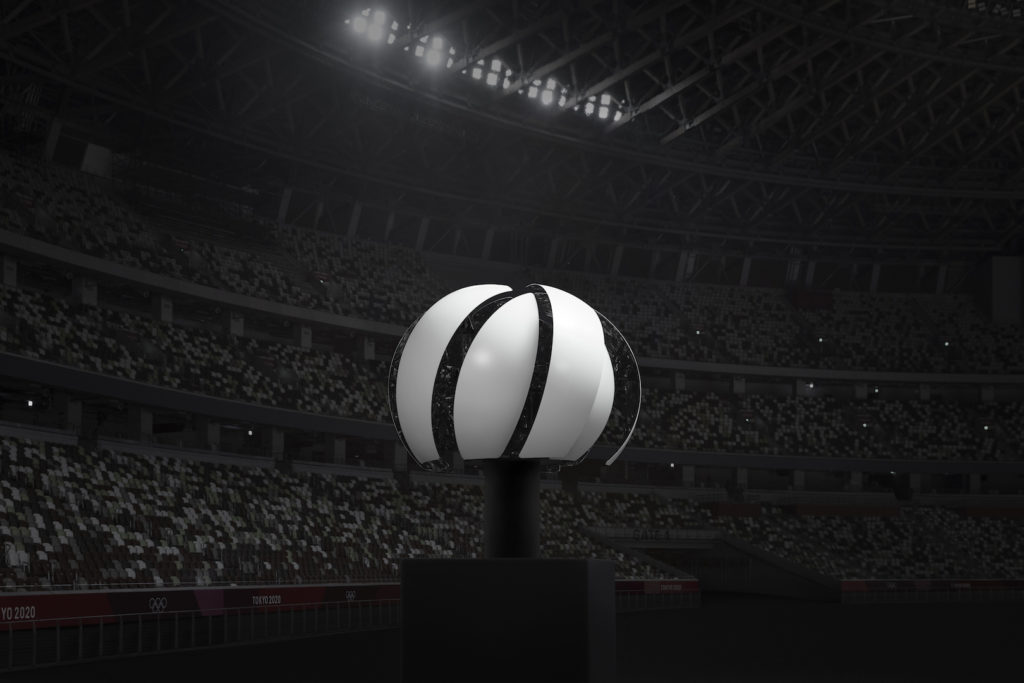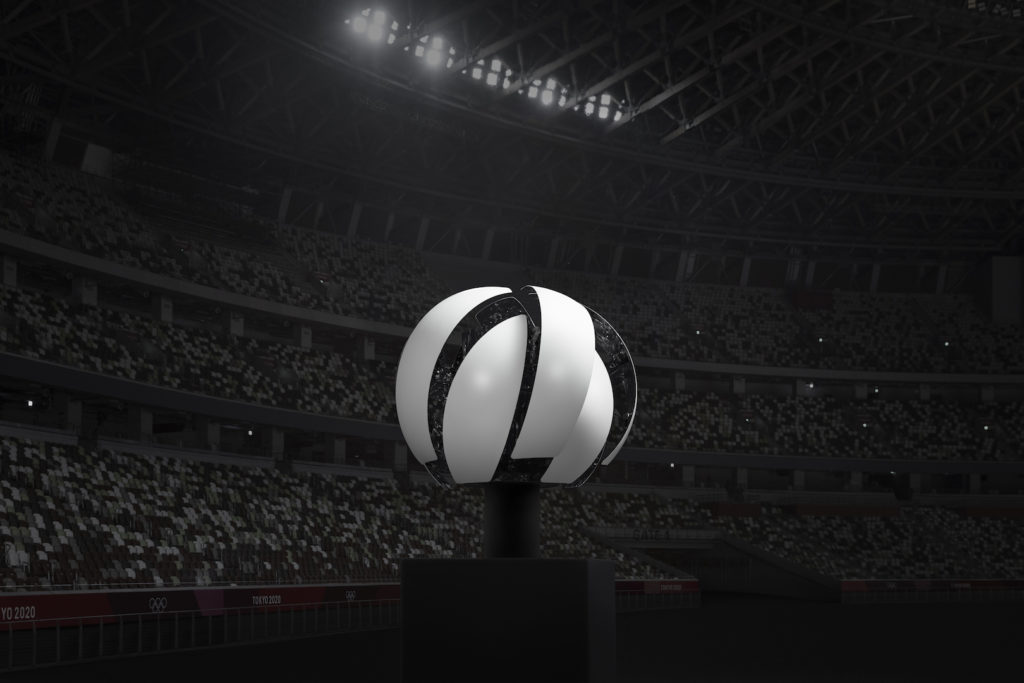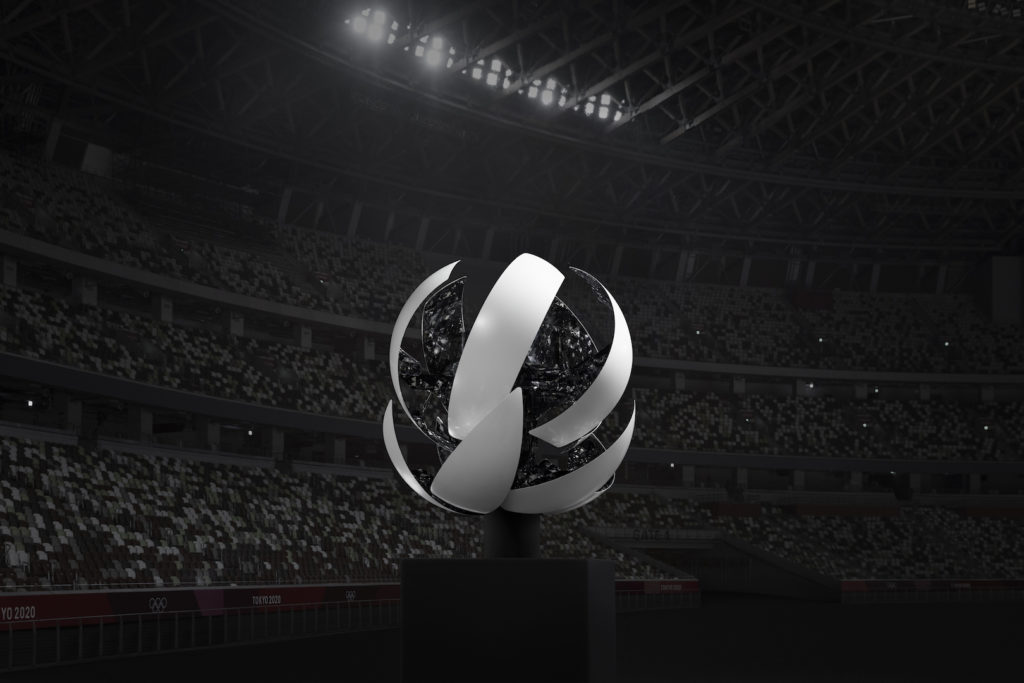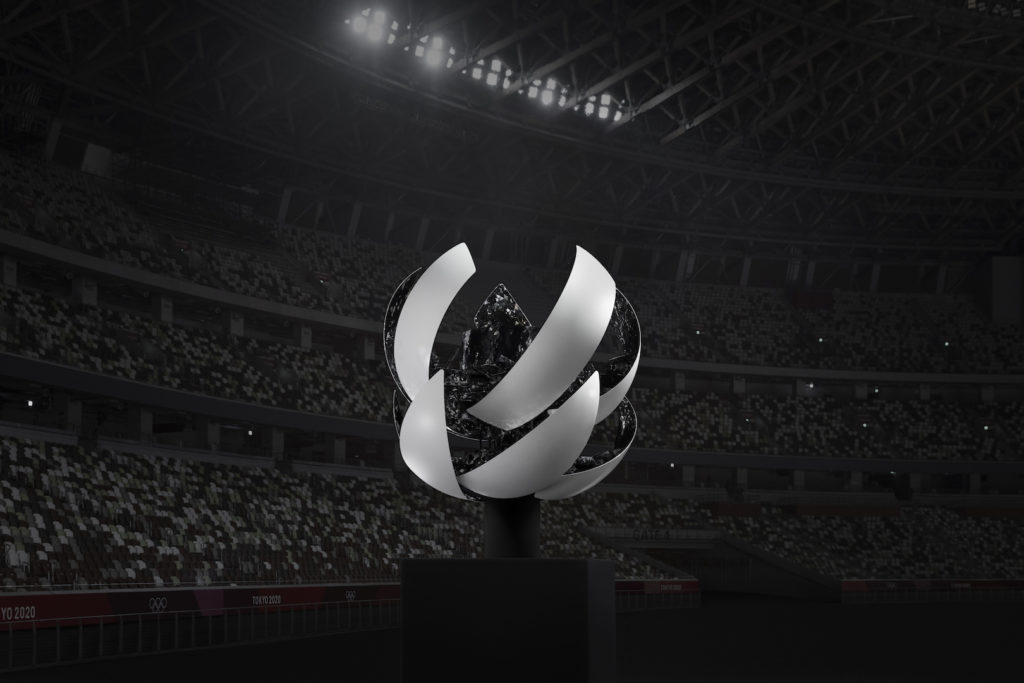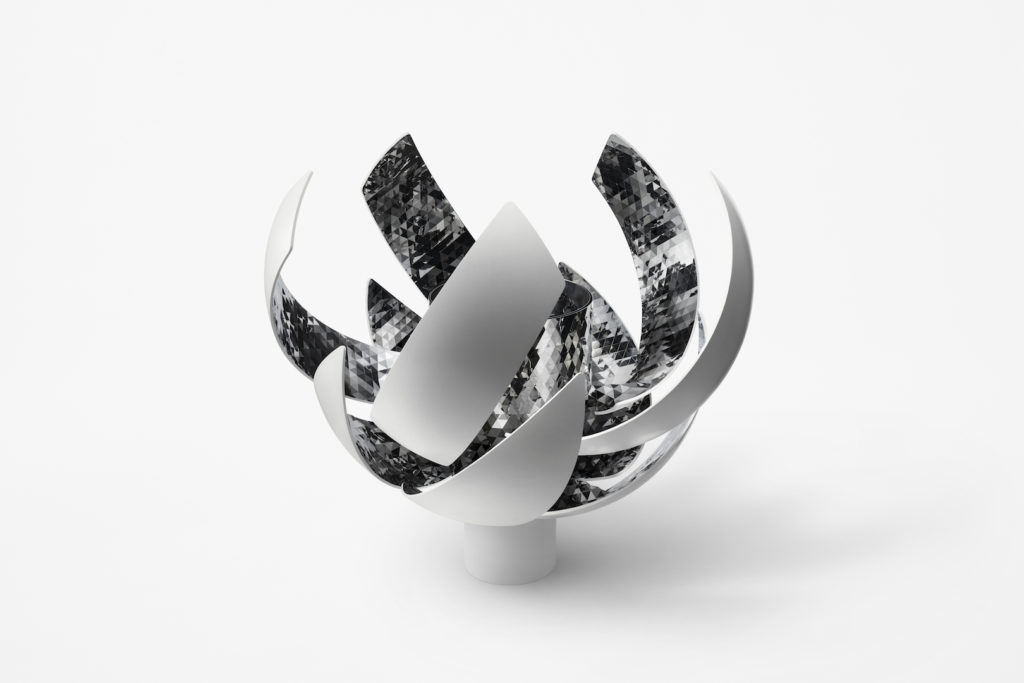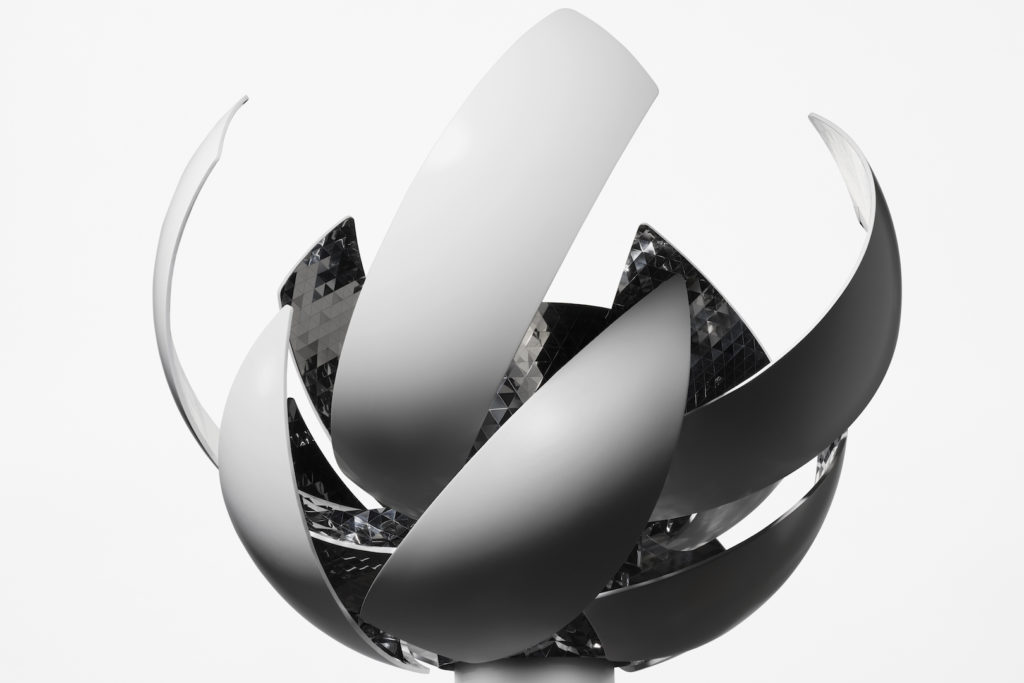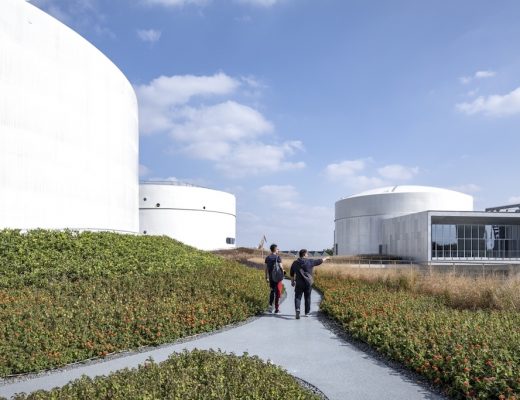Tokyo-based Nendo studio has shared detailed images and the concept behind the Tokyo 2020 Olympic Cauldron, which was designed based on the concept “All gather under the Sun, all are equal, and all receive energy” by Mansai Nomura, who was the Chief Executive Creative Director of the planning team for the Opening and Closing Ceremonies at the Tokyo 2020 Olympics and Paralympics.
A total of 85 drafts were made out, from flames trapped in a heat-resistant glass sphere to spinning the flames to create a spherical appearance, in order to express the desired resemblance to the sun. Through trial and error, a spherical form was designed, consisting of upper and lower hemispheres each with five panels representing the Olympic rings.
Hydrogen energy, garnering attention as next-generation energy, fuels the flames. The hydrogen was produced at a facility in Fukushima Prefecture, which is undergoing recovery from the Great East Japan Earthquake that occurred in 2011. The electricity required for electrolysis of water in the hydrogen production process is provided by solar power generation. Hydrogen burns with a colourless and transparent flame, and is invisible. In order to serve as the Olympic flame, it was necessary to be coloured by flame reaction, so sodium carbonate was used for the “yellow” flame. The amount and direction of the aqueous solution sprayed from the vicinity of the burner were repeatedly examined along with the amount of hydrogen and the angle of the valve, in order to adjust the movement and shape of the flame to shimmer like firewood was stoked – a first-of-its kind design.
The cauldron weighs 2.7t, and the diameter after transformation is about 3.5m. The exterior panel, which weighs approximately 40 kg per sheet, was made by cutting out a 10 mm thick aluminum plate; molding it with a special hot press machine capable of applying a pressure of 3,500 tons, of which only a few exist in Japan; and then milling it. Since distortion occurs when heat is applied during milling, the work was performed at ultra-low speed while consistently scanning the shape using laser, shaping up to 7 mm thickness where strength is required, and down to 4 mm where strength is not required, to accommodate weight reduction. The last phase consisted of adjustments, polishing, and application of heat-resistant paint, all of which were finished by the hands of craftsmen.
The internal drive unit was required to be as compact as possible, yet highly waterproof, fireproof, and heat resistant. By covering the machines with polygonal mirror panels as much as possible, it was intended to create a diffused reflection of the lighting from the ceremonies and the flamelight. Tests for heat resistance and wind resistance were repeated, and the apparatus was tuned to prevent any vibration or error even under varying conditions. As a result, a smooth movement with fine accuracy in panels passing each other was realized, operating at less than 3mm distance at the area of narrowest passing width.
Photographers : Hiroshi Iwasaki and Takumi Ota
You might also like:
Nendo designs Tokyo house with curved staircase that connects interior with exterior




